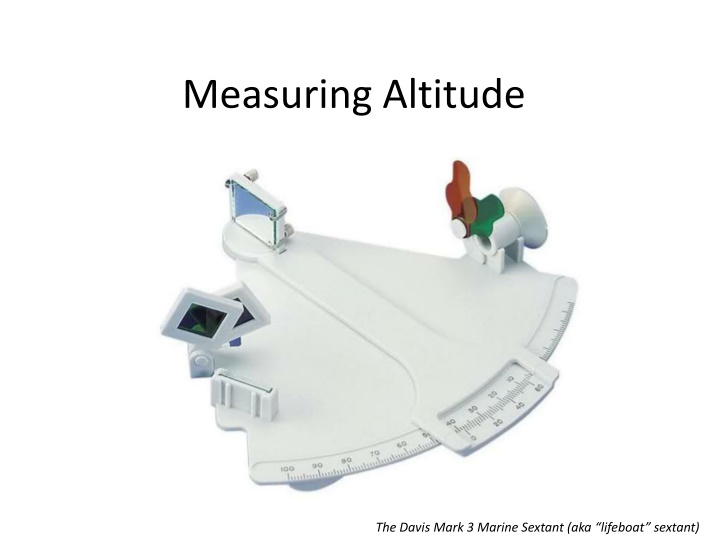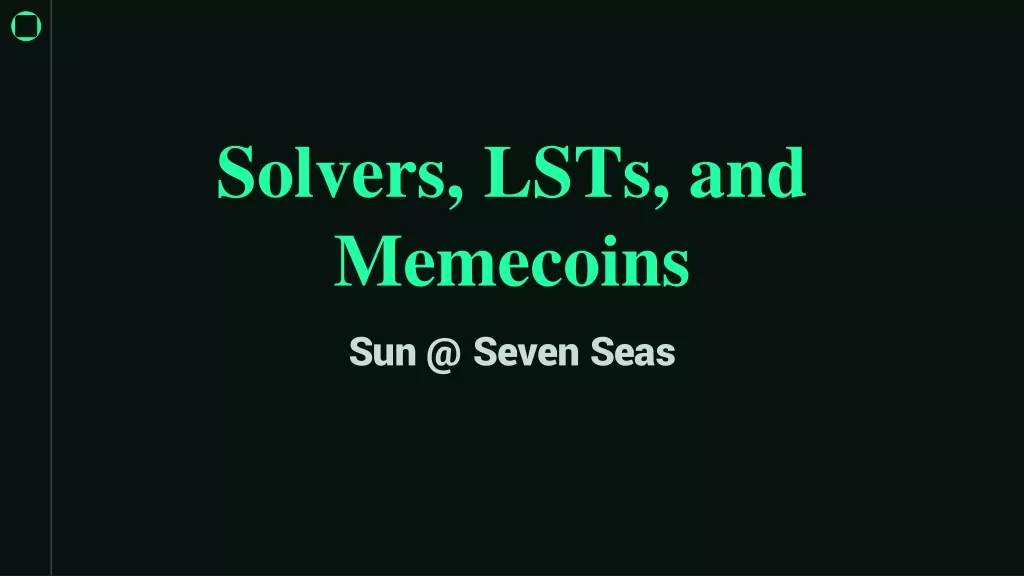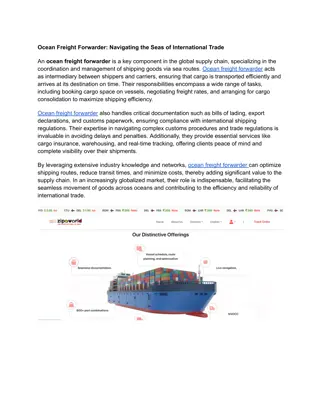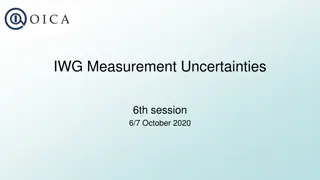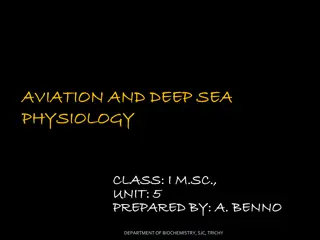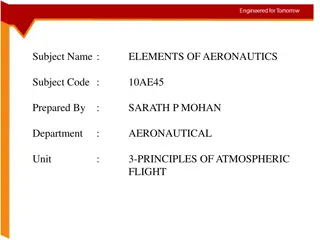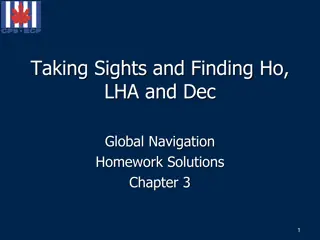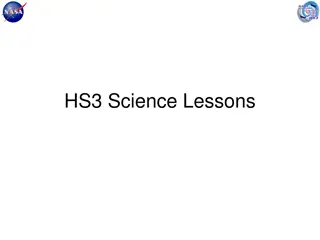Navigating the Seas with a Sextant: Altitude Measurement
Explore the art of measuring altitude using a Davis Mark 3 Marine Sextant. Learn about correcting index errors, taking stellar and solar sights, and reading a sextant for accurate navigation at sea.
Download Presentation

Please find below an Image/Link to download the presentation.
The content on the website is provided AS IS for your information and personal use only. It may not be sold, licensed, or shared on other websites without obtaining consent from the author.If you encounter any issues during the download, it is possible that the publisher has removed the file from their server.
You are allowed to download the files provided on this website for personal or commercial use, subject to the condition that they are used lawfully. All files are the property of their respective owners.
The content on the website is provided AS IS for your information and personal use only. It may not be sold, licensed, or shared on other websites without obtaining consent from the author.
E N D
Presentation Transcript
Measuring Altitude The Davis Mark 3 Marine Sextant (aka lifeboat sextant)
Light Path through a Sextant The moveable arm adjusts the angle of Mirror B
SextantGeometry The arc is about one sixth of 360 degrees, hence a sextant Through geometry, it can be proven that: altitude ( ) = two times angle observed between the mirrors (2 ) Sextant graphic courtesy of Joaquim Alves Gaspar - own image, CC BY 2.5, https://commons.wikimedia.org/w/index.php?curid=1314046
View through a Sextant A sextant produces a split screen, one stationary (from the horizon mirror) and one adjustable (from the index mirror)
The instrument error called Index Error must be accounted for prior to an altitude measurement. Remove the error by adjusting the index mirrors until you have a continuous horizon at zero. Alternatively, adjust the angle until you have a continuous horizon. This angle is your index error. Set the sextant to zero and observe the horizon. If it is broken between the two images, there is index error. The index correction is the negative value of the index error. Therefore, the index correction is always removed from the altitude reading.
Taking a stellar sight Rock the sextant in an arc motion to confirm that you were level with the horizon when making the measurement. Align horizon image with the horizon and find a star with your index mirror Adjust the index mirror until the star lines up with the horizon
Taking a Sun Sight Here you will need the index filter. Never look at the Sun though a sextant without a filter! Usually, the lower limb of the Sun is used to measure solar altitude. You may also need a horizon filter to shield the glare of the Sun on the water.
Reading a Sextant Arc reads whole degrees 0 on Venier is the benchmark to read Arc (always read lower value) Venier reads arcminutes (in 2 increments) The first alignment of Vernier and Arc tickmarks to the right of zero is the benchmark to read the Venier. VENIER Remember 60 = 1o (60 arcminutes = 1 degree)
Sextant Operation Quiz Name ______________________ 1.What is a sextant used to measure? 2.Specifically in celestial navigation, between which two benchmarks does a sextant measure? 3.In what unit(s) does a sextant measure? 4.Before taking sights of the Sun, you align the direct and reflected images of the horizon. Your reading is 1.8 . a.What is your Index Error? _________ b.What is your Index Correction? _________ 5.You should always read the ( higher or lower ) value on the arc scale of the sextant? (circle answer) 6.What is the purpose of "swinging the arc" when taking a sight with a sextant? a. To help obtain a clear view of the horizon. b. To be sure that the sextant is horizontal at the time of the sight. c. To help focus the body in the sextant telescope. d. To be sure that the sextant is vertical at the time of the sight. Answer:____ 7.How do you measure the vernier scale on the sextant? 8.What is the reading of this sextant measurement: 9.What is the Index Error of the sextant in our example on the board? Answer: _______ 10.What is the sextant reading of the Sun s lower limb on the board (uncorrected for the Index Error)? Answer:_______
